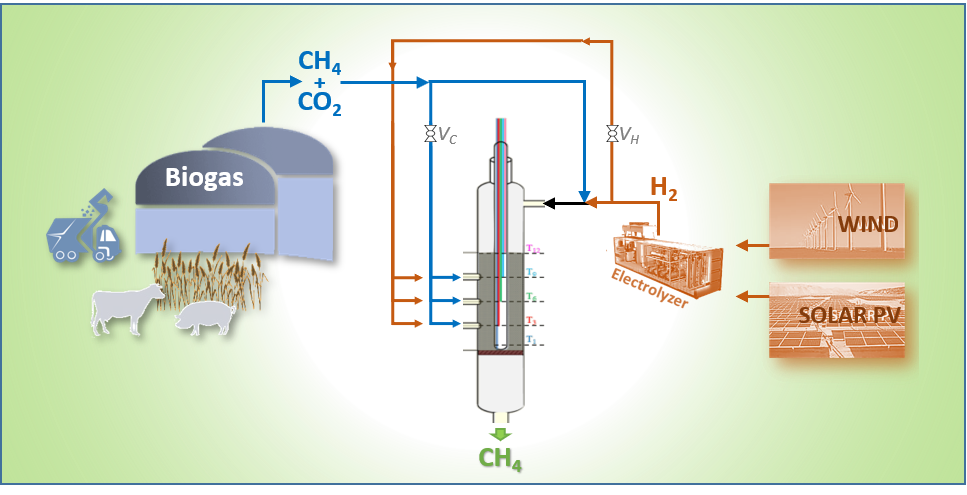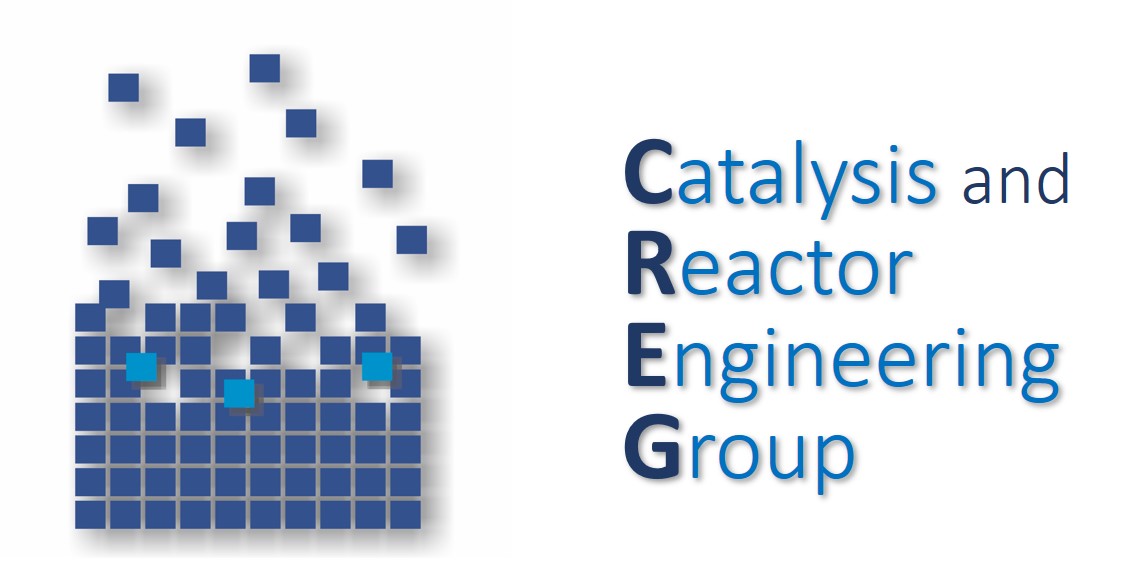-
Proyectos
Explotación energética de biogás e hidrógeno renovable intensificada a través de materiales tri-funcionales y configuraciones de reactor no convencionales (EBHUC)

- Fecha de inicio: 01-09-2023
- Fecha de finalización: 31-08-2026
- Coordinador: José Ángel Peña
- Tipo: Nacional (AEI)

Biogas is a scarcely exploited resource in Spain. Currently, there are hardly any infrastructures for its utilization, contrasting with the situation in Northern Europe. The document “Hoja de ruta del biogás en España” (Biogas Roadmap in Spain), presented in October 2020 by the Spanish Government, foresees a production capacity of ca. 34 TWh/year by harnessing this renewable resource. Among its uses is heat production and its transformation through reforming (dry or with steam) into hydrogen. Among the primary sources of biogas, it can be highlighted the organic fraction of solid waste (OFMSW) or the sludge from wastewater treatment plants (WWTP). The capacity of other industries such as agricultural, cattle or agri-food should not be forgotten.
Our research group (CREG, https://creg.i3a.es) has been working for years on the thermocatalytic methanation of CO2 contained in biogas. In this way, Synthetic Natural Gas (SNG) with characteristics analogous to fossil fuels can be obtained, which can be consumed on-site or injected in the yet existing natural gas network. In both cases, this transformation (“upgrading”) is particularly interesting as a means of transportation (via pipeline) and storage of renewable energy.
El proyecto de investigación consiste en estudiar el uso de corrientes de gas ricas en CO2, juntamente con hidrógeno renovable para producir gas natural sintético (SNG o biometano). Como fuente de CO2, se ha elegido un biogás con una composición cercana a la obtenida en vertederos de residuos sólidos urbanos (RSU). Como fuente de hidrógeno se utilizará H2 de alta pureza, como el producido a partir de excedentes de electricidad (procedentes de instalaciones eólicas o fotovoltaicas en horas "valle" -menor demanda que oferta-) mediante electrólisis. El producto resultante es el conocido "Gas Natural Sintético" (o "Gas Natural Renovable" o "Biometano") con características comparables a las de origen fósil, pero con un origen completamente "verde". Dicho producto podría inyectarse en la red de gas natural ya existente, favoreciendo el almacenamiento y transporte de energía
Para llevar a cabo este proceso, se ha propuesto adoptar dos formas de operar en paralelo: A) utilizando reactores convencionales (lecho fijo -FBR- y lecho fluidizado -FLBR-) y sólidos multifuncionales (trifuncionales) que operan cíclicamente en 2 etapas; y B) más tradicional en cuanto a los sólidos, pero con configuraciones de reactor "no convencionales" como politrópico (alimentación múltiple -PFBR-) y un reactor de lecho fijo con pared de membrana (MB-FBR).
More información:
-
Aragüés-Aldea, P.; Mercader, V. D.; Durán, P.; Francés, E.; Peña, J. Á.; Herguido, J. Biogas upgrading through CO2 methanation in a multiple-inlet fixed bed reactor: Simulated parametric analysis. Journal of CO2 Utilization, vol. 93, pp. 103038, 2025. https://doi.org/10.1016/j.jcou.2025.103038
-
Mercader, V. D.; Aragüés-Aldea, P.; Durán, P.; Francés, E.; Herguido, J.; Peña, J. A. Optimizing Sorption Enhanced Methanation (SEM) of CO2 with Ni3Fe + LTA 5 A mixtures. Catalysis Today, vol. 453, pp. 115262, 2025. https://doi.org/10.1016/j.cattod.2025.115262
-
Sanz-Monreal, P.; Mercader, V. D.; Aragüés-Aldea, P.; Durán, P.; Francés, E.; Herguido, J.; Peña, J. A. Techno-economic assessment of a plant for the upgrading of MSW biogas to synthetic natural gas by thermocatalytic methanation. Biomass and Bioenergy, vol. 198, pp. 107871, 2025. https://doi.org/10.1016/j.biombioe.2025.107871
-
Aragüés-Aldea, P.; Pizarro, R. G.; Durán, P.; Mercader, V. D.; Francés, E.; Peña, J. A.; Herguido, J. Catalytic CO2 methanation for biogas upgrading using a polytropic fixed bed reactor. Catalysis Today, vol. 457, pp. 115351, 2025. https://doi.org/10.1016/j.cattod.2025.115351
-
Mercader, Víctor Daniel; Durán, Paúl; Aragüés-Aldea, Pablo; Francés, Eva; Herguido, Javier; Peña, José Angel. Biogas upgrading by intensified methanation (SESaR): Reaction plus water adsorption – desorption cycles with Ni-Fe/Al2O3 catalyst and LTA 5A zeolite. Catalysis Today, vol. 433, pp. 114667, 2024. https://doi.org/10.1016/j.cattod.2024.114667
-
Durán, P.; Aragüés-Aldea, P.; González-Pizarro, R.; Mercader, V. D.; Cazaña, F.; Francés, E.; Peña, J. A.; Herguido, J. Biogas upgrading through CO2 methanation in a polytropic – distributed feed fixed bed reactor. Catalysis Today, vol. 440, pp. 114849, 2024. https://doi.org/10.1016/j.cattod.2024.114849
Project: PID2022-136947OB-I00
